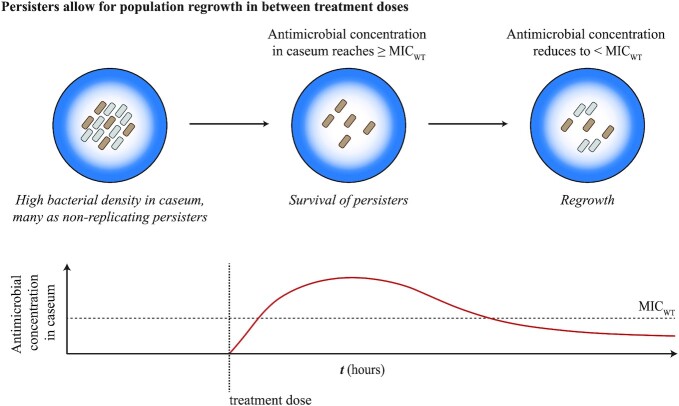Figure 5.
Tolerance and persisters. Tolerance is defined as the ability of drug-susceptible bacteria to survive for an extended period antimicrobial concentrations that would normally kill them (i.e. MICWT). Tolerance is hypothesized to be responsible for the long treatment regimens required to achieve sterility in MTBC infections. Persistence may be defined as ‘heterotolerance,’ when only a subset of the population exhibits the tolerance phenotype. Bacterial cells that exhibit the tolerance phenotype are known as ‘persisters,’ and the granuloma caseum likely harbors large populations of non-replicating MTBC persisters. In between treatment doses, antimicrobial concentrations may drop below MICWT. Persisters may revert back to a replicating phenotype during this period and lead to population regrowth.

